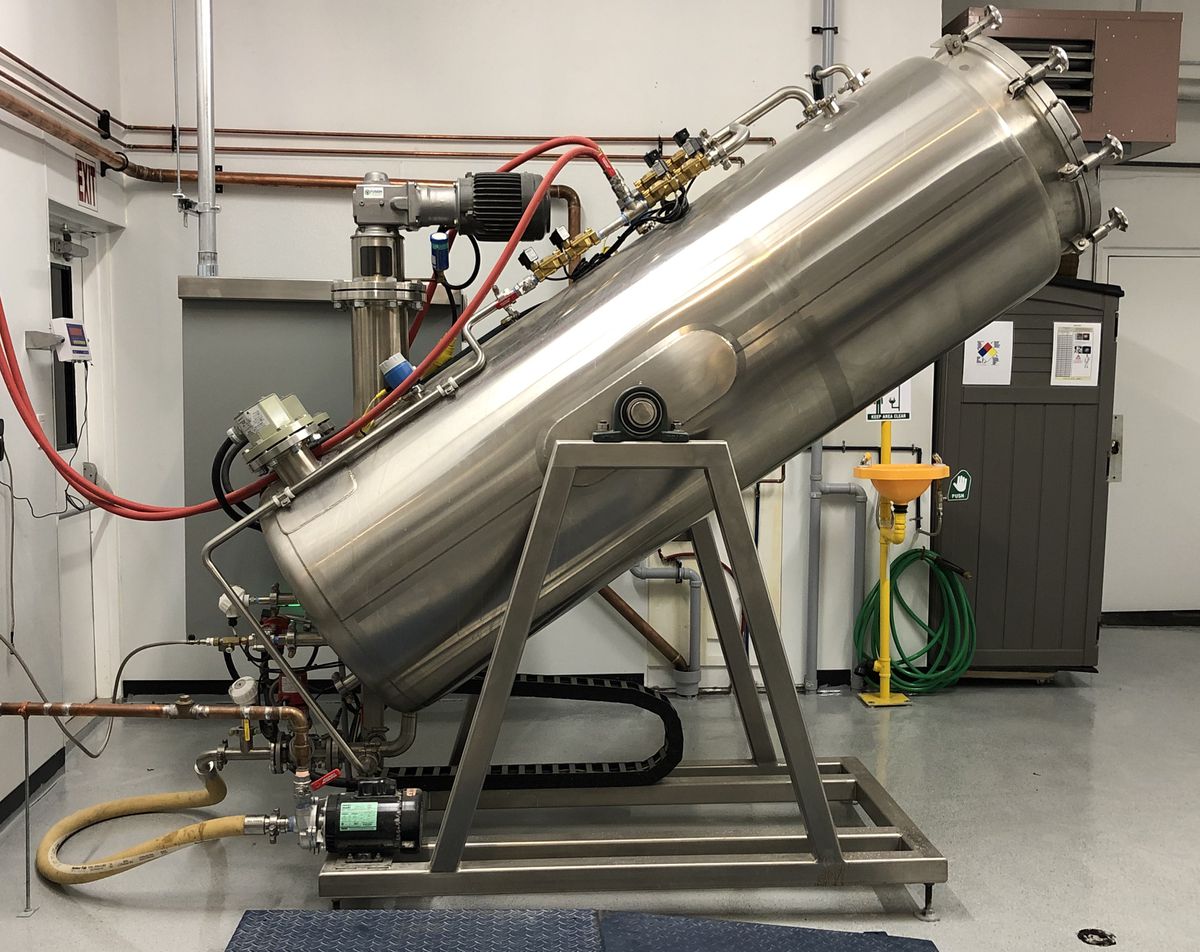An alkaline hydrolysis device is seen at the Newcastle Funeral Home in Newcastle, Ont. on Sept. 18, 2019. The device is an alternative to burial or cremation, where a process involving heat, water and an alkaline chemical breaks remains down.
Trevor Charbonneau /Handout
A 142-kilogram pig has been thrust into the middle of a contentious debate in the funeral industry, and the unusual development could end up reshaping how the sector is regulated in Ontario, and across the country.
The deceased pig, which came from a farm in Indiana, recently served as a surrogate for a human corpse in a lab experiment designed to determine if an emerging technology known as low-temperature alkaline hydrolysis is a threat to public health.
The procedure, which is offered as an alternative to cremation, and uses heat, water, pressure and potassium hydroxide to accelerate natural decomposition. The result, which proponents argue is less costly and more environmentally friendly because it dissolves a body rather than burning it, leaves an end product similar to ashes.
Trevor Charbonneau, a funeral home operator in Newcastle, Ont., has been battling the Bereavement Authority of Ontario (BAO), which regulates the funeral industry, for more than a year after it froze his licence to use a low-temperature hydrolysis device last summer. The BAI said it wanted more evidence that the process is safe and can eliminate infectious diseases that might be in a corpse. Since the process discharges fluids and tissue from the dissolving procedure into the sewer system, the regulator wanted a closer look.
Mr. Charbonneau turned to the Indiana University Department of Pathology and Laboratory Medicine to conduct a peer-reviewed study. The pig – which died of natural causes and was later injected with infectious agents – was put through an alkaline hydrolysis machine similar to the one Mr. Charbonneau has.
“Complete inactivation of spores and digestion of animal tissue were achieved,” said the study, which is to be published in the Journal of ABSA International, the Association for Biosafety and Biosecurity.
Mr. Charbonneau spent $25,000 to have the study done, and will present its findings at talks with the BAO on potential regulations for the technology.
After giving Mr. Charbonneau a licence to use the process in 2017, the BAO changed course last summer amid concerns from public health authorities. Funeral homes in Ontario want to offer two forms of alkaline hydrolysis: the low-temperature process, which conducts the procedure at 95.5 degrees C over 14 hours, and a similar one that reaches 150C and takes about six hours. Applications to operate high-temperature machines have been put on hold.
Mr. Charbonneau also has taken his fight to a provincial tribunal to get the licence back.
Aubrey LeBlanc, chairman of the BAO, said the regulator is erring “on the cautious side” because the technology emerged quickly. Alkaline hydrolysis has been around since the 1800s and was primarily used on animals.
Mr. LeBlanc said he has called a meeting with the owners of the four funeral homes in Ontario that want to offer alkaline hydrolysis – Mr. Charbonneau and three others that have high-temperature machines. The goal is to discuss a framework for regulations.
A few low-temperature units are in use in Canada, including in Quebec, Saskatchewan and at the Centre for Forensic Sciences in Toronto, but several provinces are considering whether to allow broader use of the technology. Funeral home operators and regulators across the country are closely watching the debate in Ontario.
Mr. LeBlanc said alkaline hydrolysis is just one of several new technologies. Other proposed alternatives to cremation include freeze-drying processes being developed in Europe, and controlled composting.
“We decided to use [alkaline hydrolysis] as a bit of a testing ground in a way, because [the debate] we go through here we’re going to have to go through on each of the other technologies,” Mr. LeBlanc said.
The BAO says alkaline hydrolysis is not the same as cremation in terms of reducing the body to ash, and warns operators against using comparisons. Funeral home operators who want to use the new technology say they do not oppose rules on how to operate.
“Everybody agrees there should be regulations. Nobody doesn’t feel that,” said Gina Pilon who operates a funeral home in Arnprior, Ont., with her husband and leads the Ontario Alkaline Hydrolysis Coalition, which was formed to lobby the province. “It’s just making sure that the regulations make sense from an operational standpoint and that there’s sound scientific reasons behind it, and that they’re fair.”
Scott Miller, a funeral director in Ottawa who has been in the industry for 30 years and has helped formulate regulations in the past, said he’s not opposed to new procedures as long as public health and safety are assured. He wants the proper analysis done now to prevent unexpected problems.
“Things today, they get developed and they come to market so quickly that there isn’t a lot of thought put into it,” Mr. Miller said. “I’m in favour of anything that has all the right rules to it.”















